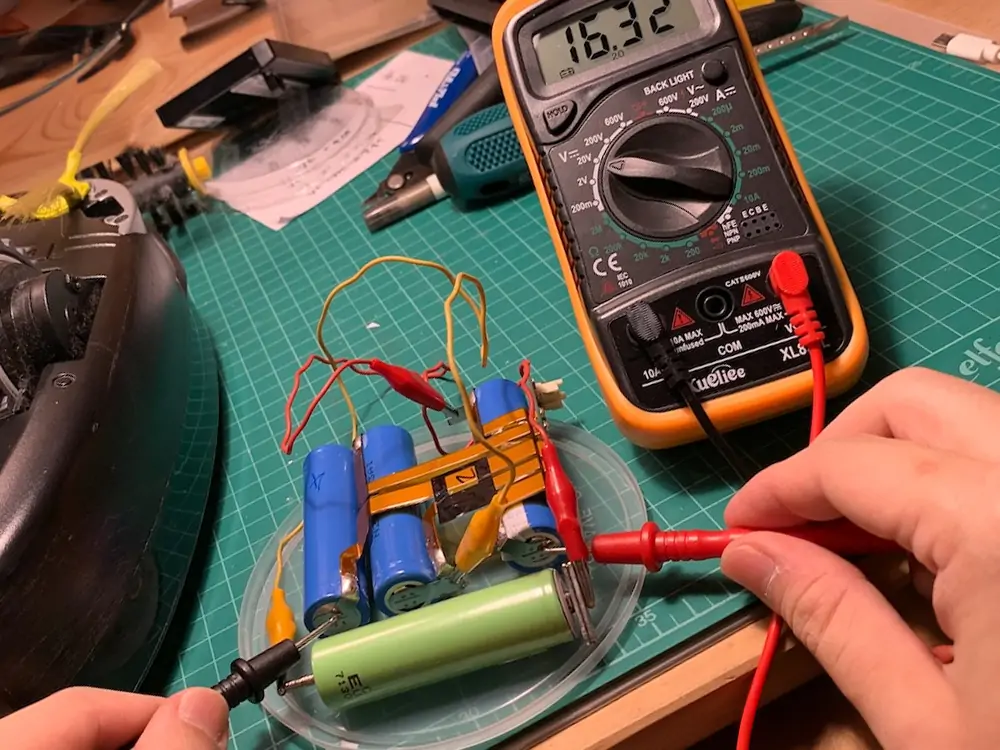
Introduction
Lithium-ion batteries can be found in laptops, cell phones, power tools, cameras, and other gadgets and appliances. A multimeter test is done to determine whether the battery should be replaced. A multimeter enables you to inspect the voltage and condition of the lithium battery. This article outlines how to test a lithium-ion battery using a multimeter, which should help readers new to this process, Learn more below.
Prerequisites
Before you begin testing the lithium battery, ensure you have the following tools ready: Before you start testing the lithium battery, ensure you have the following tools ready:
– Multimeter – This gadget can be used to measure voltage, current, and level of resistance. Select one that has an option for testing lithium batteries.
– Small screwdrivers – To remove screws from batteries if the need arises on some of the devices.
A lithium-ion battery is one of the most common types of rechargeable batteries in the market today, and it is widely used in powering portable electronic devices, electric vehicles, and solar energy systems, among others. Thus, the following are the necessary steps to test a lithium-ion battery.
Follow these key steps to accurately test the condition of your lithium battery with a multimeter: Follow these key steps to accurately test the condition of your lithium battery with a multimeter:
Charge The Battery First
According to the test method, lithium batteries must not be tested in any discharged condition. Sometimes, the battery is either new or has not been used for some time, so charge it to its total capacity before commencing the operation. This stabilizes the voltage readings that are emitted from the circuit.
In this step, it is necessary to switch the multimeter to voltage mode.
Switch on the multimeter and place it on voltage mode, which will be displayed as ‘V’ with either a bent line or a zig-zag symbol. Select a DC voltage range between 3-20V because lithium batteries are based on DC voltage.
Access The Battery Terminals
The battery terminals must be exposed to accommodate the two probes of the multimeter to make a proper connection between the positive and negative terminals. In other gadgets, such as laptops, the battery may be located inside a compartment that requires an opening of the back cover. As such, if you are unfamiliar with the device manual, refer to it for further clarification.
Connect Multimeter Leads
The battery should be installed in the device, and then the black probe on the multimeter should be inserted into the negative terminal of the lithium battery. Attach the red lead to the terminal that is marked ‘+.’ Be careful with connections and disconnections because they can lead to wrong readings.
Note Voltage Reading
Measured voltage describes the battery health of a battery. A reading between 3. 6V to 4. 2V means the battery is fully charged to the extent that it can meet all the necessary power demands. Suppose it is lower than 3. 6V, it says that the battery is partially charged. If the voltage is too close to 0V or has substantial variations, this would imply that the battery has run out and should be changed.
Load Test (Optional)
To further ascertain, a load test can be conducted using the device for a while with recorded voltage taken. If the battery is healthy charged, the voltage should remain relatively constant even when current is taken from it. This shows that the distortion in the voltage level happens abruptly when the battery is near the end or about to be completely depleted.
Depending on the voltage levels, if they are normal, the battery is in good condition. A low or a high reading suggests that the battery, which is known for its durability, should be replaced.
Generally, it is deemed necessary to replace the lithium battery when the following symptoms are observed:
Here are some signs indicating the lithium battery needs replacement: Here are some signs indicating the lithium battery needs replacement:
- The voltage is either equal to or less than zero or no voltage.
- This is typically indicated by low voltage variations or what is commonly known as ‘dips’ in voltage.
- This can manifest in the form of a battery drain, for instance, a battery drain that happens frequently even after charging the phone to its total capacity.
- Defective or swollen cells or cracks: Another sign you notice is if there are bulges or cracks on the battery.
Replacing the batteries if they are faulty or spoilt is advisable as they cannot offer the necessary power. The use of such batteries leads to more permanent damage to the devices which are being used. It is also important not to wait until problems occur before checking the battery’s health; this should be done frequently. This means that, with regard to issues that are likely to happen with the facility, early detection enables their replacement.
The article covers the appropriate handling of lithium batteries.
After discharging an atomic battery, be careful when dealing with the used lithium battery that has to be replaced with a new one. When mishandled, these batteries are prone to fires; please do not discard them in regular waste bins. However, battery recycling centres should be located in countries where lithium batteries are recycled. It says that, when managed appropriately, there are no environmental risks.
Having read through the article, know more on safely disposing lithium batteries.
Summing Up
It is recommended to use a multimeter to check the lithium batteries in order to acquire precise data that would indicate whether they need replacement or not. This way, not only are voltage interpretations done at their basic level, but load tests are performed occasionally, allowing most battery ailments to be detected early. Some measures have to be taken to ensure safe practices when it comes to used batteries. Regular battery check and replacement is effective in enhancing the efficiency of the devices and for the long-run continuity.